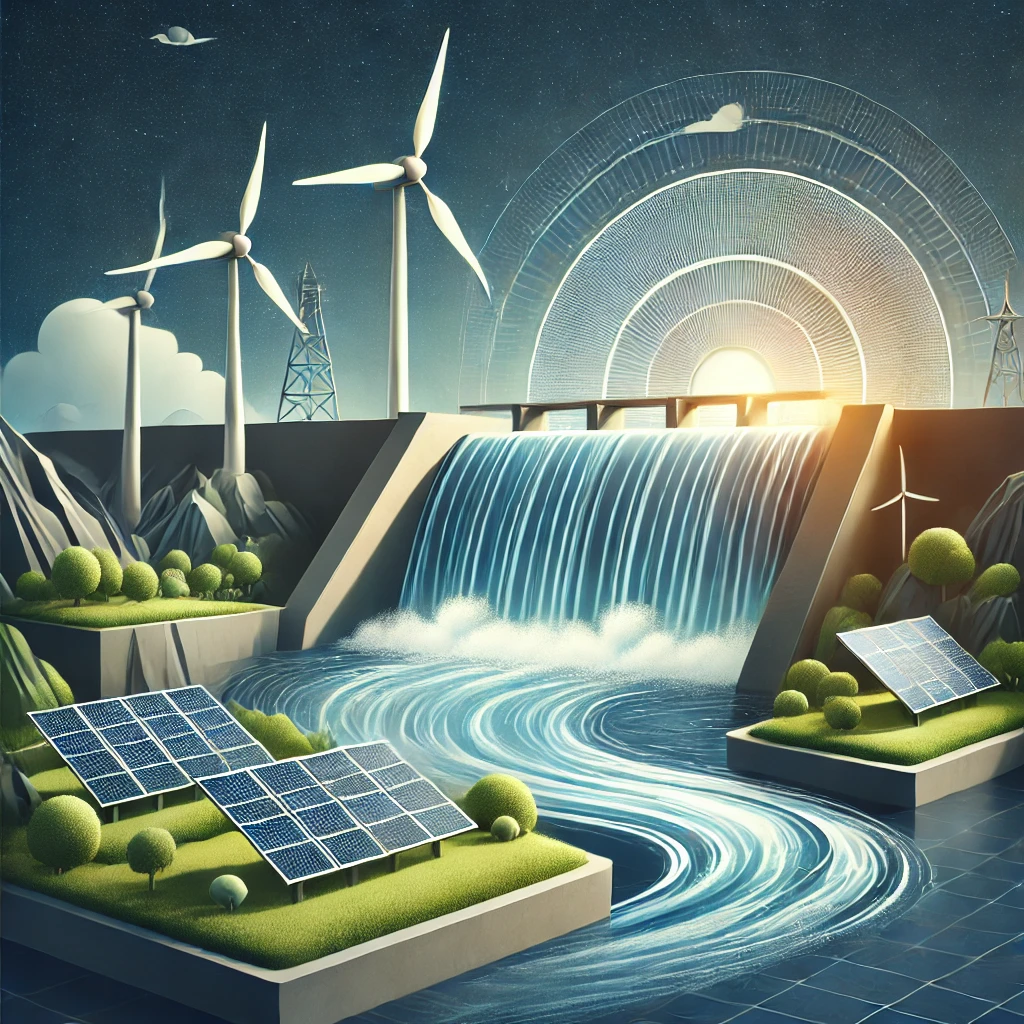
Hydropower: The Forgotten Renewable Energy Source
Introduction to Hydropower
When we think of renewable energy, solar power and wind energy often come to mind. But what about hydropower? This powerful and often overlooked energy source has been quietly providing sustainable energy for decades. In this article, we'll dive into the world of hydropower, exploring how it works, its environmental benefits, and why it's time for this "forgotten" renewable energy source to make a comeback.
The Basics of Hydropower
Hydropower, also known as hydroelectric power, harnesses the energy of flowing water to generate electricity. It’s one of the oldest and most reliable forms of renewable energy. Imagine the force of water rushing down a river – that power can be captured and transformed into usable energy. Simple, right?
How Does Hydropower Work?
Hydropower plants use water's kinetic energy to turn turbines, which then generate electricity. A dam or a run-of-river system can store or channel water through turbines to create this power. The best part? No fuel is burned, making it a clean, sustainable alternative to fossil fuels.
Types of Hydropower Systems
There are several types of hydropower systems, including:
- Reservoir Hydropower: Water is stored in a reservoir behind a dam and released to generate electricity.
- Run-of-River Hydropower: This system doesn’t require a dam. It diverts a portion of river water to generate power.
- Pumped-Storage Hydropower: Water is pumped to a higher elevation for storage and then released to generate electricity when demand is high.
Why Hydropower Is Essential for Sustainable Living
Hydropower is a crucial piece of the sustainability puzzle. As we face increasing concerns about climate change solutions, hydropower provides a renewable, reliable, and scalable energy source. Unlike solar or wind power, hydropower can operate 24/7, making it an essential player in the renewable energy landscape.
Hydropower and Sustainable Living
Integrating hydropower into our energy mix helps reduce dependence on fossil fuels, cutting greenhouse gas emissions. Imagine powering your home with clean, renewable energy while contributing to a greener planet. Now that’s what I call a win-win!
The Benefits of Hydropower Over Other Energy Sources
When compared to other renewable energy sources, hydropower stands out in several ways:
- Reliability: Unlike solar or wind energy, hydropower doesn’t depend on weather conditions.
- Energy Storage: With pumped-storage hydropower, excess energy can be stored and used later, providing a stable energy supply.
- Low Carbon Footprint: It produces minimal greenhouse gas emissions once the infrastructure is in place.
Hydropower's Role in Fighting Climate Change
One of the key climate change solutions we have is renewable energy, and hydropower can significantly reduce carbon emissions. By replacing coal and natural gas with hydroelectric power, we can mitigate climate change and help create a sustainable future for generations to come.
Integrating Hydropower with Other Green Technologies
While hydropower is a powerhouse on its own, it can also complement other green technologies like solar power for homes and energy-efficient appliances. For example, imagine a home with solar panels on the roof, a hydropower system supplying the grid, and energy-efficient appliances running on that clean energy. Now that’s the future of sustainable living!
Combining Solar Power and Hydropower
Hydropower and solar power are a dynamic duo when it comes to creating an energy-efficient home. Solar power can provide electricity during sunny days, while hydropower ensures a steady supply even when the sun isn’t shining. Together, these two can create a balanced and sustainable energy system.
Energy-Efficient Innovations in Hydropower
Hydropower isn't stagnant; it’s evolving with new energy-efficient innovations. From advanced turbine technology to improved environmental impacts, the future of hydropower is looking brighter than ever. Energy-efficient designs are making hydropower plants more cost-effective and environmentally friendly, paving the way for wider adoption.
Hydropower and the Future of Green Energy
As we move toward a greener future, hydropower has a vital role to play. By investing in hydropower infrastructure, we can increase the percentage of renewable energy in our power grids, helping to decarbonize our economies and reduce our environmental impact.
Hydropower as Part of the Global Green Movement
From top green building techniques to innovations in energy storage, hydropower is part of the larger movement toward sustainable living. By focusing on low-impact, renewable sources of energy, we can combat climate change, reduce pollution, and improve the health of our planet.
Conclusion: The Power of Hydropower
Hydropower may not be as flashy as solar panels or wind turbines, but it's a proven, reliable, and essential source of clean energy. By tapping into this “forgotten” resource, we can unlock a world of benefits—from reducing greenhouse gas emissions to ensuring a sustainable energy future. Hydropower is a vital piece of the puzzle in the fight against climate change and in our journey toward a greener, more sustainable world.
FAQs About Hydropower
- 1. What is hydropower?
- Hydropower is a form of renewable energy that uses the movement of water to generate electricity. It can be harnessed through dams, river flows, and pumped-storage systems.
- 2. How does hydropower help with sustainable living?
- Hydropower contributes to sustainable living by providing a clean, renewable energy source that reduces reliance on fossil fuels and lowers greenhouse gas emissions.
- 3. Can hydropower be combined with other renewable energy sources?
- Yes, hydropower can work alongside other renewable sources like solar and wind power to create a reliable and sustainable energy system for homes and businesses.
- 4. What are the environmental impacts of hydropower?
- While hydropower is generally considered environmentally friendly, it can have some ecological impacts, such as affecting river ecosystems and wildlife. However, newer technologies aim to minimize these effects.
- 5. How can I incorporate hydropower into my sustainable lifestyle?
- You can support hydropower by advocating for policies that promote its use, investing in renewable energy programs, or even incorporating hydropower systems in areas where they’re viable.